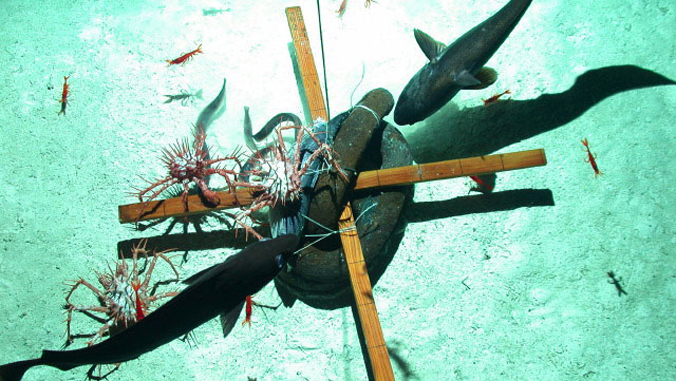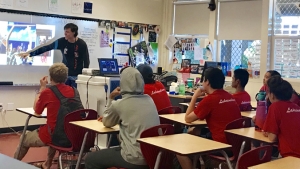
Two graduate students in the Department of Oceanography at the University of Hawaiʻi at Mānoa visited two high schools on Maui recently to share their research and hands-on activities. Approximately 200 students at Lahainaluna High School and Seabury Hall learned about ocean-going research vessels, ocean measurements and deep-sea biology.

Noah Howins, a recent graduate of the School of Ocean and Earth Science and Technology’s (SOEST) undergraduate global environmental science program, presented on ocean acidification, coastal erosion, plastic pollution and the oceanic time-series at Station ALOHA.
“These topics are locally relevant to the students, societally important to Hawaiʻi as a whole, and illustrate the breadth of topics and opportunities available to undergraduate students in SOEST,” said Howins.
Howins, a Lahainaluna High School alum, aimed to inspire local students by sharing his journey.
“I hope I showed them that local kids from high schools in the outer islands are not limited in their future,” said Howins. “I want them to see that they are able to move beyond Maui and take part in a variety of exciting fields.”
Elizabeth Miller shared with Maui students her passion for deep-sea biology and the fascinating adaptations deep-sea animals use to cope with the challenges of low light, high pressure, cold temperature and scarce food. She brought preserved specimens of deep-sea fish so students could see first-hand some of the specific adaptations and touch the unusual creatures. Additionally, Miller discussed the importance of the deep sea in the ocean ecosystem and the threat posed by future deep-sea mining efforts.
“Though the deep sea is a subject most people know little about, it is such an engaging topic,” said Miller. “I hope by learning about this ocean environment and the threats to it, people will be inspired to continue learning and defend the ocean ecosystem.”
For more on the story, see SOEST’s website.
—By Marcie Grabowski

